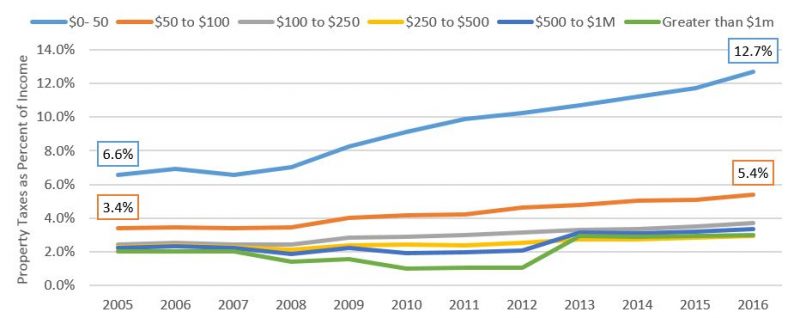Property Tax Burden Doubled for Half of New York City Filers in Last Decade
Stringer Calls for Expanded Tax Credits and Relief to Help Struggling New Yorkers
New York City Comptroller Scott M. Stringer released a report detailing the alarming disparity in how property tax burdens have grown for working families. The new analysis found that over the last decade, taxes have increased at triple the rate of incomes, making it nearly twice as hard to pay for these taxes for households with incomes less than $100,000. The report additionally highlights the ineffectiveness of current property tax relief programs, which are narrowly funded, highly restrictive, and fail to support struggling New York City homeowners. To ease the burden on low and middle income families, Comptroller Stringer is recommending the newly established property tax commission consider expanding tax credit eligibility and making benefits more generous to combat the increasingly regressive burden of property taxes.
“Property taxes are rising too fast and incomes are rising too slowly – and it’s becoming harder than ever for already struggling New Yorkers to get ahead,” said Comptroller Stringer. “Rising property taxes are becoming a barrier to the middle class and we can’t afford to continue down this path. We need to give New Yorkers a break, and turn a regressive tax system into a fair and progressive one. We must explore common sense solutions and expand tax relief to level the playing field for working families.”
The Comptroller’s report highlighted the significant impact that property tax increases have had on households making less than $250,000, particularly for homeowners earning less than $100,000 per year who make up roughly half of all New York City property tax filers and experience the most significant burdens. Specifically:
- Households making less than $50,000 saw their property taxes increase by 98 percent and their median incomes drop by almost 1 percent since 2005. As a result, the property tax burden for these New Yorkers nearly doubled from 6.6 percent in 2005 of income in 2005 to almost 13 percent in 2016;
- Households making between $50,000 and $100,000 saw their property taxes increase by 67 percent since 2005 as their median income grew by just 4.6 percent. As a result, their burden grew from 3.4 percent of income in 2005 to 5.4 percent in 2016; and
- Households making between $100,000 and $250,000 saw their property taxes increase by 54 percent as median income rose by 4.9 percent. As a result, their burden grew from 2.4 percent of income in 2005 to 3.7 percent in 2016.
Regressive Growth in Property Tax Burdens

The burden of New York City’s property taxes is worsened by narrowly funded and restrictive relief programs, which fail to support middle-income New Yorkers.
- For instance, the STAR Property Exemption and NYC Enhanced Property Tax Benefit offer just $300 and $52 respectively – providing little relief against the average cost of property tax bills of nearly $4,000 for households making less than $100,000 a year;
- More generous programs, such as the Enhanced STAR exemption, are generally restricted to low-income senior citizens; and
- Other localities offer more generous benefits for lower income households and provide a model for reform. A household making $33,000 and paying property taxes of $3,800 would receive a property tax benefit nearly twenty times as generous in Maryland than in New York.
Comptroller Stringer is recommending the New York City property tax commission explore models for addressing these disparities and making our property tax system fairer for all New Yorkers. The report includes a number of suggestions which include increasing the number of New Yorkers eligible for tax relief programs, expanding benefits, and exploring deferment programs.
To read the full report, click here.
No comments:
Post a Comment